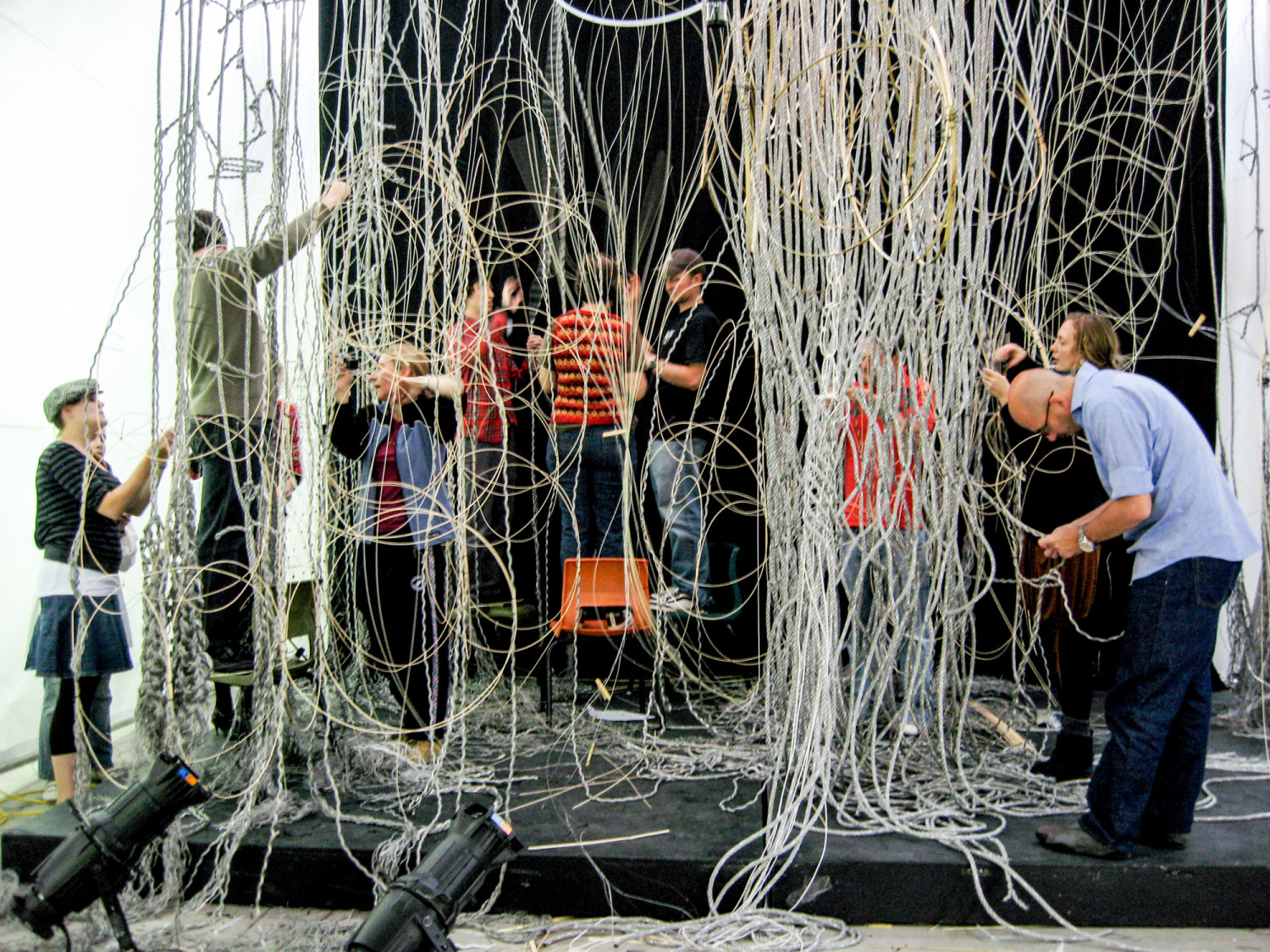This two-day workshop, on the theme of “Metabolic Network”, brought together five researchers working in the area of electronic sensing in art and design, with a special focus on textiles and architectural-scale applications.
The network- a large installation made from a field of suspended fibers that have different properties: such as elasticity, conductivity, dissolvability, or luminosity. By joining the fibers together, a field of possibilities open up and patterns within the field emerge. The use of sensors and actuators, both electronic and mechanical, provided dynamic and responsive features in the network. The result was a metabolic network that emerged, acted and self-destructed over the course of the two-day period.
The metabolic network will serve as a playground to explore the potentials of sensors and actuators hooked up to a responsive architecture. It will serve as the common medium for the work of the five invited researchers, each expert in some aspect of electronic sensing, textile design or architectural form-making. Es gibt bereits 3D-Drucker für unter 500€. Große industrielle Gerätschaften liegen über 50.000€. Die Preisspanne der am Markt erhältlichen Apparate ist also nicht unerheblich. Aus unserer Sicht starten gute Einstiegsgeräte innerhalb einem Preisniveau von ca. 1.500€. Wie wähle ich einen 3D-Drucker aus? Vor dem Kauf eines 3D-Druckers sollte der erwählte Anwendungsbereich (siehe bitte „Einsatzgebiete von 3D-Druckern“) akkurat beleuchtet und definiert werden. Ebenfalls die Erwartungshaltung des Users an die Genauigkeit der zu produzierenden 3D-Modelle spielt eine entscheidende Rolle siehe FDM-Drucker versus SLA-Drucker

Special focus on textiles and architectural-scale applications